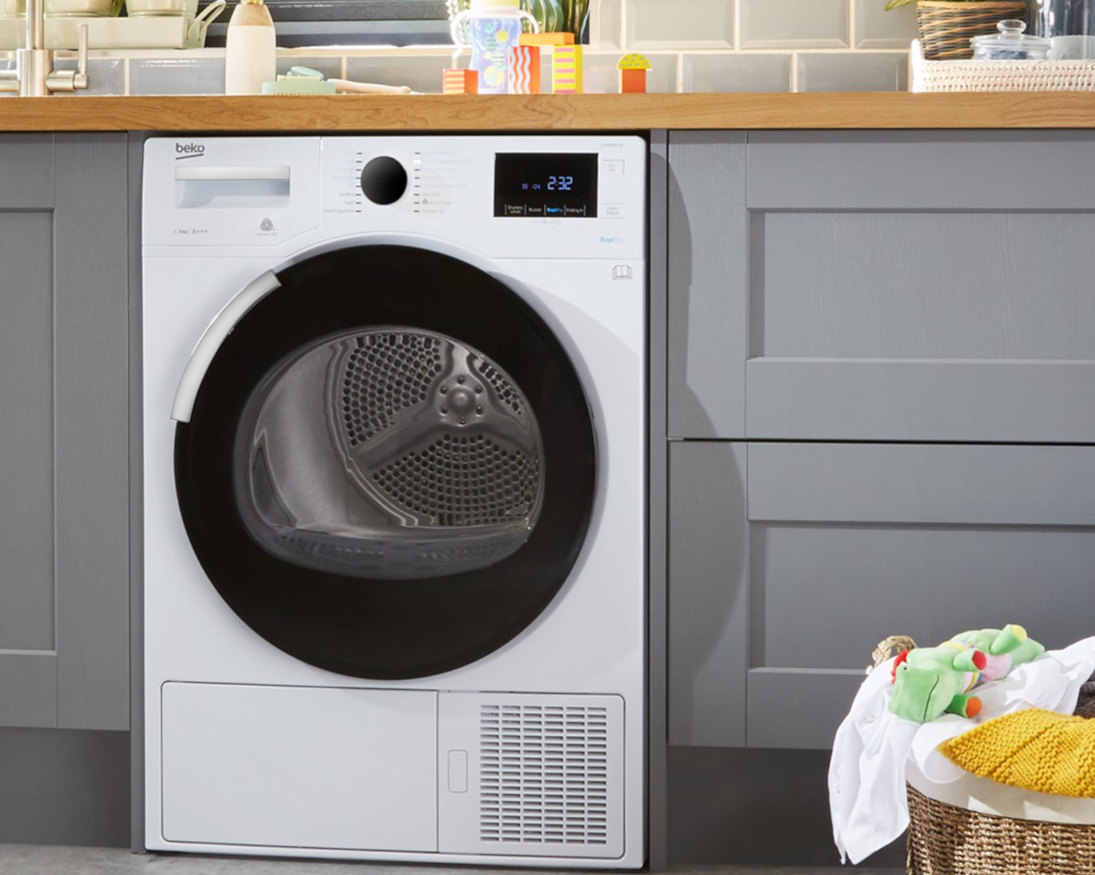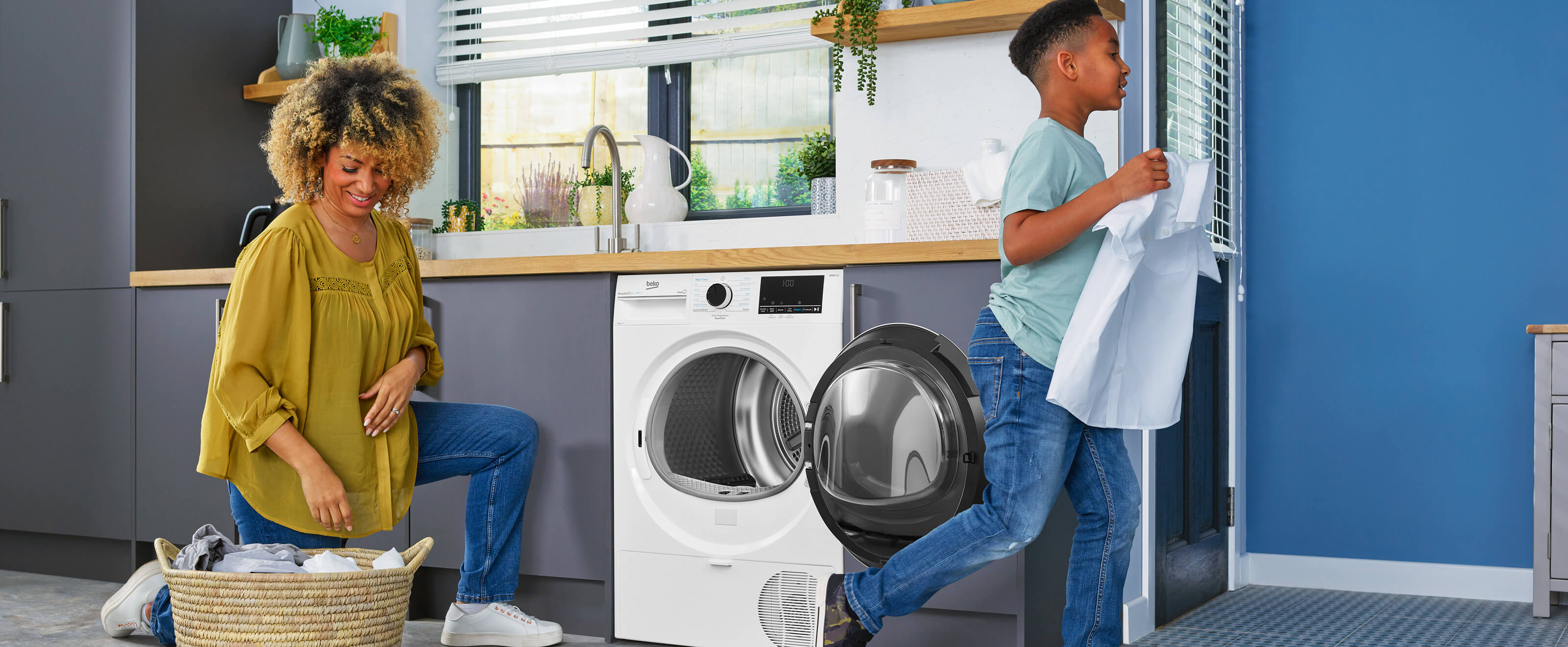The issues with drying laundry indoors in winter
As we enter the depths of winter, the sunshine and warmth we need to dry our clothes outside seems to have disappeared for good. Whilst it may seem an obvious option, is it dangerous to resort to hanging our laundry up to dry indoors?
To help gain some perspective on the issue, we researched just how many days a year we are actually able to dry our clothes outdoors in winter without rain or low temperatures getting in the way. We also spoke with a property specialist to find out why hanging your clothes indoors to dry in these winter months could be bad for the health of you and your home!

How many days a year can we dry clothes outside?
To evaluate just how many days, we can hang our clothes out to dry in our gardens or on clotheslines, our laundry experts undertook some research into the average weather conditions we see across the UK in winter. And what they found was very insightful!
The average daily temperature in January and February of 2021 did not exceed 5 degrees Celsius, and there were over 42 rainy days across January to March 2021. I’m sure you don’t need our laundry experts to tell you that these are not great conditions for drying clothes outdoors.
If we go off the weather from last year, there are just over 40 dry days from January to March. So, what do we do if we can’t dry our clothes outside? We certainly can’t stop washing our clothes for the entire winter, so we need to keep them indoors to dry. But is there a right and wrong way to do this? According to our experts, there is!

Expert advice on how to dry your clothes in winter
Did you know that wet clothes in the home can increase the damp in your property by around 30%? Damp specialist and property expert from national home buying firm housebuyers4u, Paul Gibbens, is here to tell you some frightening facts and give his best advice on how to prevent damp in your home when drying clothes indoors this winter. First, we asked him a series of frequently asked questions to figure out the basics.
How can hanging wet laundry inside the home during winter cause damp?
During the winter we tend to have our heating on more, and when we combine this with damp laundry, a lot of condensation is produced – not least because normally we keep our windows closed during winter, so there is naturally a lack of ventilation. This condensation begins to seep into our walls, carpets, and furniture, creating damp.
It’s really important not to place your drying laundry on top of your radiators, or to block them in any way, as heat is one of the few ways you can keep dampness at bay. It’s also very dangerous to place your clothes close to an open flame, such as a log fire, as your clothing can be very flammable.
A great way around this is to use a tumble dryer. These machines will dry your clothes without creating condensation in your home. Beko’s range of Heat Pump tumble dryers are the perfect choice for those looking for an energy efficient appliance that is economical to run. By using a lower temperature to dry the load, a Heat Pump tumble dryer offers better protection for your laundry, saving you money on your energy bills.
Whilst tumble dryers are an excellent drying option, it can be time consuming to wait for your dryer’s cycle to finish. Luckily, a selection of Beko’s Heat Pump tumble dryers feature the impressive RapiDry technology, which shortens the length of the dryer cycle, drying up to 5kg of laundry in just 1 hour, whilst maintaining an overall high energy efficiency.

How does damp and mould affect your home and your health?
As moisture levels increase in your home from drying laundry, the environment will become damp. This can have a big impact on your health and can affect your breathing, especially for those who suffer from asthma. Damp and mould can cause respiratory problems, such as coughing, runny noses and sneezing, which can potentially develop into much more serious respiratory diseases.
A build-up of the dangerous mould spores, caused by extreme damp, can begin to cause allergic reactions like skin rashes. Mould can be damaging even to seemingly healthy adults but, more significantly, it can be extremely damaging for small children, babies, and the elderly.
How do you spot mould in your home?
There are a couple of different tell-tale signs that your home may have damp and mould – here’s how to spot signs of mould in your house:
- A musty smell
- The appearance of mould or mildew on walls, floors, or ceilings
- Walls, floors, or ceilings that feel cold or wet
- Dark or discoloured patches on walls or plaster
Lifting or peeling wallpaper
How to prevent damp and mould in the winter months
Don’t panic! Whilst this might seem very scary and detrimental to your health, there are lots of ways you can prevent damp and mould from ever getting into your house. Our first recommendation is to avoid drying clothes indoors – instead, consider purchasing a washer dryer or tumble dryer. Tumble dryers are perfect for the winter months, those that have Beko's RapiDry™ technology give you the option to dry your clothes on a shorter cycle, while still maintaining a high energy-efficiency.

94% of our customers recommend our washer dryers and tumble dryers, and you can find the perfect tumble dryer to suit you using our tumble dryer buying guide.
Here are some more ways you can help keep the damp at bay this winter:
- Do not pack clothes too tightly in cupboards and allow room for them to breathe.
- Use extractor fans and open windows to increase ventilation from laundry, cooking, showers, baths.
- Wash mould off hard surfaces using vinegar, water, and soap mix.
- Use an air purifier or humidifier to keep humidity low and to create a better air environment.
- Keep any heating filters or air conditioning filters serviced and clean.
- Try to keep damp-prone areas clean and dry e.g., under sinks, showers.
- Keep windows open and take regular damp readings.
Remember that even if you are living in rented accommodation, it is still your responsibility to ensure that mould and damp do not develop due to poor caretaking. However, your landlord needs to deal with any issues you raise with them about damp or mould.
Ensure that you keep on top of any damp or mould issues with our top tips and remember that purchasing a tumble dryer is one of the top methods of keeping damp at bay. If you’re looking to purchase a new tumble dryer, take a look at our range that features innovative Rapidry technology.



